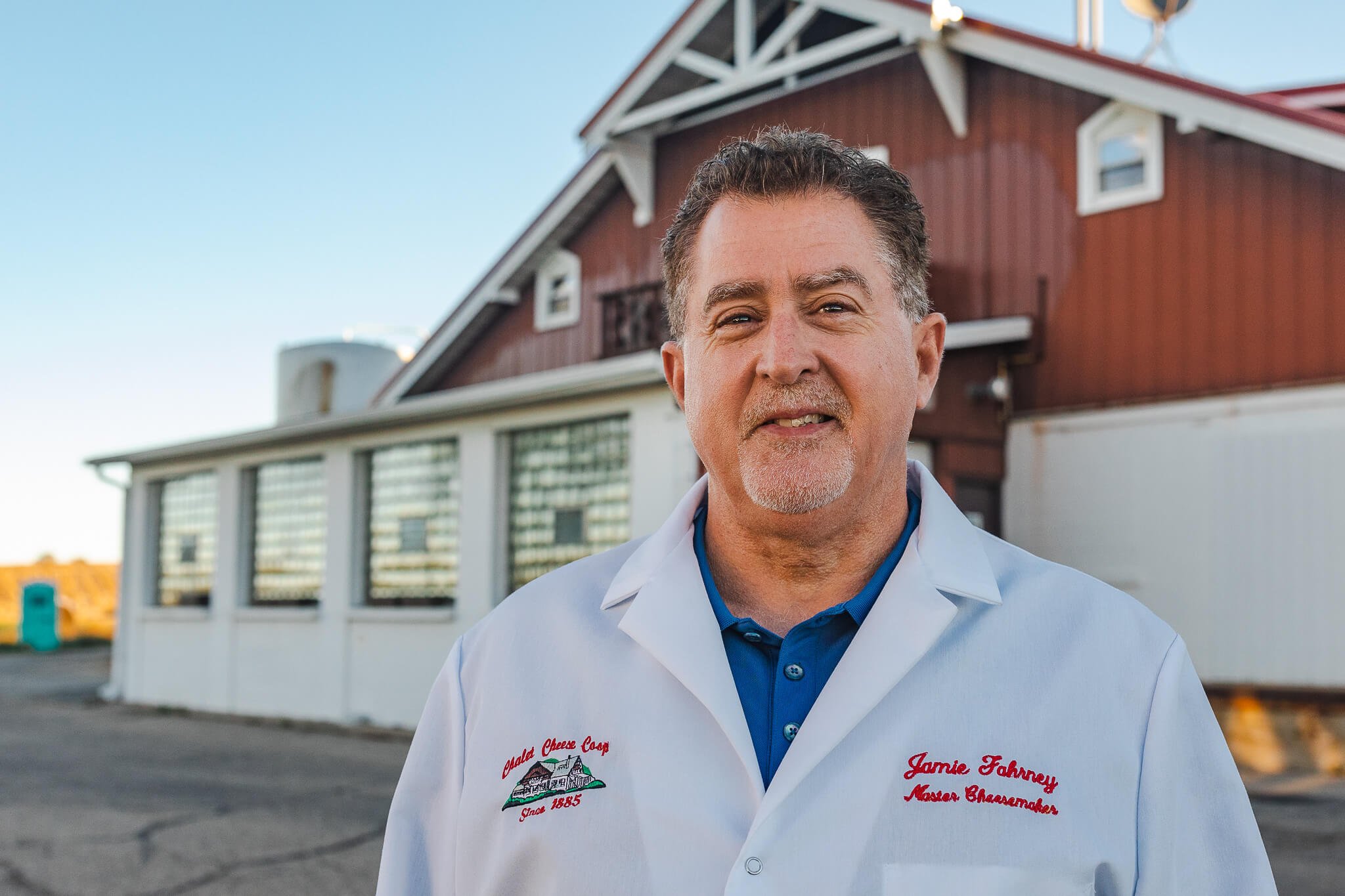The Rise and Fall of a Notoriously Smelly Washed Rind Cheese: Limburger
"File:Limburger-Käse.jpg" by MarkusHagenlocher is marked with CC BY-SA 3.0.
While most people are most familiar with the cheese due to its reputation for having a strong pungent smell, there’s more to Limburger than just its aroma. According to National Historic Cheesemaking Center, Green County was once home to a record 213 cheese plants in 1910. But currently Chalet Cheese Cooperative is the only cheese plant that continues to make limburger cheese in Green County and the country. Chalet Cheese Cooperative was founded in 1885 and remains one of eleven remaining cheese plants in the county, working hard to continue its long tradition of making all types of excellent cheeses including limburger.
The Origins of Chalet Cheese Cooperative & Limburger Cheese
While the name Chalet Cheese Cooperative did not get adopted until 1947, the Chalet was founded in 1885 by five farmers and named the Bleiler-Gibbons Factory. Several name changes later, the cooperative would become the major producer of Limburger cheese in 1947 in a deal with Kraft, explained Jamie Fahrney, master cheesemaker at Chalet Cheese. They built a new “state of the art” factory to produce Limburger, making Chalet the biggest producer of the cheese at the time.
Limburger goes back to Trappist monks in the Limburg region of what is now known as Belgium in the 19th century. Fahrney describes the cheese as “an odoriferous smear ripened cheese. The smell is caused by the "smear" applied to the surface of the cheese. It’s a salt water and B-Linens (bacteria) solution. The bacteria breaks down the fatty acids and proteins of the cheese and that's how it ages.” He calls it the “granddaddy of all the smear ripened cheeses.”
According to the National Historic Cheesemaking Center a Swiss immigrant Nicholas Gerber began making Limburger in New York and then opened up a Swiss cheese factory in 1869.
Other factories in Green county also produced the cheese but it was more for personal and local use than wider distribution. At the time, Limburger cheese was commonly used as a meat substitute in sandwiches in the mid-century, Fahrney said. Eventually smaller cheese plants stopped making it, which made Chalet Cheese the only producer in the United States to this day.
Through its history, Chalet has maintained its strong cooperative model, starting with five farmers when it was founded. When Fahrney began working at the cheese plant as a sophomore in high school in 1978, they had 60 farmers who provided milk to Chalet Cheese. Now they are getting milk from just 13 farmers, but the quantity of milk is higher than with the 60 farmers. The farms are all family farms, ranging from 40 to 200 cows, all within a 15 mile radius.
Unlike other cooperatives in the U.S., Chalet cooperative is owned by the farmers. Fahrney explains that he along with the other staff work for the 13 members of the cooperative. Even the cheesemaking equipment belongs to them (other cooperatives may belong to the cheesemaker not the member of the cooperative.)
Limburger Cheese Today
Nowadays, while Chalet still makes limburger cheese, it’s a small portion of their cheese output since 1995 when Kraft ended their distribution. They make about 600,000 lbs. for the entire year and sell directly companies given that the cheese is pretty labor intensive. Fahrney noted that the cheese is handled 14 times before it leaves the plant. The cheese plant’s main production is baby swiss and swiss. In addition to the three main cheeses, they also make smaller batches of Havarti, Munster, and others.
While limburger popularity has diminished in past decades, Fahrney notes that they get inquiries over the years from news outlets, usually making fun of it. Many people’s first experience with the cheese is through Looney Tunes cartoons or Sesame Street. But Fahrney has seen a comeback six to eight years ago when younger folks wanted to try aged cheeses and gravitated to it but then it has since declined.
Like all washed rind cheeses Limburger has a strong smell but, “the bark is stronger than the bite.” Fahrney recommends that people should try it before judging it. For folks scared of the smell, he recommends cutting off the rind or scrubbing it in lukewarm water. Chalet also makes Le’Bec, which is similar to Limburger but does not have the odoriferous smell and has a lighter smoky flavor.
For connoisseurs, there’s different ages of Limburger cheese. There’s young Limburger that is only aged 1-2 months, medium that is 3-4 months and aged is 5-6 months. Most people, Fahrney says, buy the medium level. Generally, Limburger has a shelf life of about 6 months.
But if you want to try a genuine classic, you can have it with rye or pumpernickel bread with a good Belgium ale. Even better, if you are in Monroe, Wisconsin, center of Green County, and you want to try a quintessential sandwich, you can always go to Baumgartner's Cheese Store & Tavern and have a limburger cheese sandwich on rye bread, onions, topped with a mint.
It’s a cheese made at a historic cheese plant and that is nothing to sniff at.





